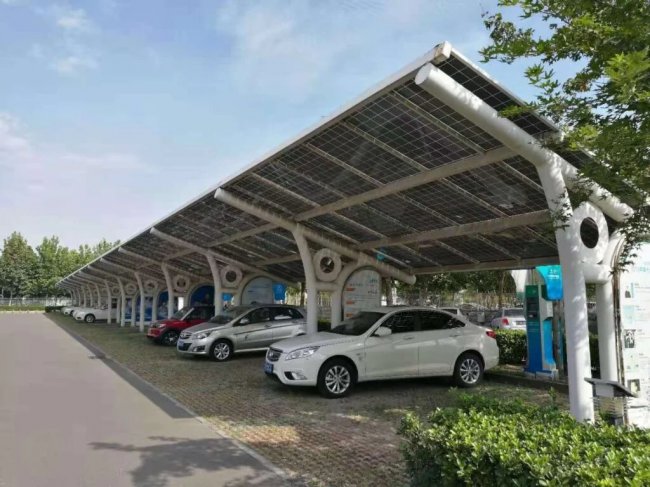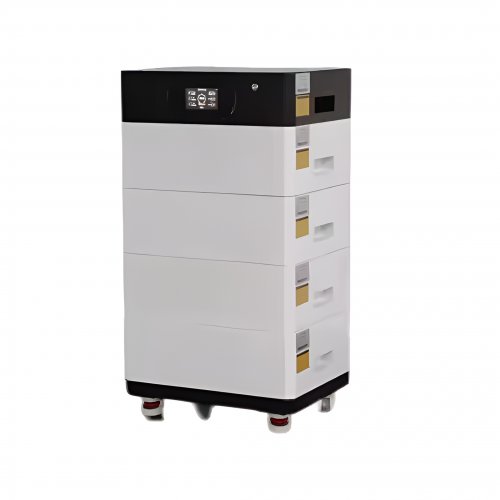Advances In Safety Characteristics: A Review Of Cutting-edge Research And Technological Frontiers
The relentless pursuit of advanced technologies across industries—from next-generation energy systems and autonomous transportation to sophisticated robotics and AI—has placed the concept of safety characteristics at the forefront of engineering and scientific research. No longer a secondary consideration, safety is now a foundational pillar, integrated into the design, operation, and decommissioning phases of complex systems. Recent progress has been marked by a paradigm shift from reactive safety measures to proactive, predictive, and inherently safe design principles, driven by breakthroughs in materials science, data analytics, and human-machine interaction.
Latest Research in Inherent and Passive Safety
A significant research thrust focuses on enhancing inherent safety characteristics, which eliminate hazards rather than controlling them. In the field of energy storage, particularly for lithium-ion batteries, this is paramount. Recent breakthroughs involve the development of novel electrolytes. Researchers have successfully engineered non-flammable electrolytes, such as highly concentrated salts in organic solvents or the use of ionic liquids, which drastically reduce the risk of thermal runaway—a chain reaction leading to fire and explosion (Zhang et al., 2023). Furthermore, the integration of self-extinguishing additives and internal current-interrupting devices represents a move towards "passive" safety, where the system autonomously responds to a fault without requiring external activation. These material-level innovations are critical for the safe scaling of electric vehicles and grid-scale storage.
In nuclear energy, Generation IV reactor designs exemplify this principle. Molten salt reactors (MSRs) and sodium-cooled fast reactors (SFRs) are being designed with negative temperature coefficients of reactivity and passive decay heat removal systems. A 2022 study on the passive safety performance of an SFR demonstrated that even under a complete station blackout scenario, natural convection of air was sufficient to maintain core temperatures within safe limits for an extended period, showcasing the robustness of these inherent physical characteristics (Kim & Lee, 2022).
Technological Breakthroughs in Predictive and Integrated Safety
The digital transformation has ushered in a new era of predictive safety. The integration of Physics-Informed Neural Networks (PINNs) and digital twin technology represents a monumental leap. Digital twins—virtual, dynamic replicas of physical assets—are now being fed real-time sensor data (e.g., vibration, temperature, strain) and processed through machine learning models that understand the underlying physics of the system. This allows for the prediction of residual useful life and the identification of precursor signals to failure long before they become critical. For instance, in aviation, major manufacturers are deploying digital twins for entire aircraft fleets, continuously updating models with flight data to predict maintenance needs and prevent catastrophic failures (Tao et al., 2023).
This predictive capability is merging with active safety systems. In autonomous vehicles (AVs), the safety characteristic of "perception robustness" is being dramatically enhanced. While traditional computer vision can be fooled, new sensor fusion architectures combine LiDAR, radar, and camera data with deep learning algorithms trained on vast, diverse datasets. A key 2023 breakthrough involved the use of event-based cameras, which have a much higher dynamic range and temporal resolution than standard cameras, significantly improving object detection in challenging conditions like direct sunlight or low-light fog (Patel et al., 2023). This multi-modal sensing, validated through formal verification methods, creates a redundant and resilient perception system, a critical safety characteristic for AVs.
Furthermore, the human factor is being integrated through adaptive safety systems. In industrial human-robot collaboration (HRC), robots are no longer just caged. Advanced force-torque sensing and 3D time-of-flight cameras allow robots to dynamically model their environment and predict human movement trajectories. The latest systems can adjust their speed and path in real-time to minimize impact force, effectively making the robot's safety characteristic a function of its proximity to a human operator, as demonstrated in recent implementations by leading robotics firms.
Future Outlook and Challenges
The future trajectory of safety characteristics research points towards even greater integration, autonomy, and resilience. Several key areas will dominate:
1. AI Safety and Explainability (XAI): As AI becomes a core component of safety-critical systems, ensuring its reliable and predictable behavior is the next frontier. Research will focus on developing AI that can not only perform tasks but also explain its reasoning, detect out-of-distribution scenarios it wasn't trained on, and fail gracefully. The safety characteristic of "interpretability" will be as important as accuracy. 2. Resilience Engineering: The focus will expand from preventing accidents to designing systems that can withstand and adapt to unforeseen disruptions, including cyber-attacks. This involves creating "anti-fragile" systems with adaptive control loops that can reconfigure themselves to maintain a safe state under a wider range of fault conditions. 3. Cross-Domain Safety Assurance: With the rise of the Internet of Things (IoT) and Cyber-Physical Systems (CPS), a failure in one domain (e.g., a smart grid) can cascade into another (e.g., autonomous traffic management). Future research must develop holistic safety frameworks and standards that can govern these complex, interconnected systems, ensuring that safety characteristics are maintained across domain boundaries. 4. Ethical and Standardization Challenges: The implementation of advanced safety systems, particularly those involving AI, raises profound ethical and legal questions. Establishing universally accepted standards, certification processes, and liability frameworks for these adaptive and learning-based systems remains a significant hurdle.
In conclusion, the field of safety characteristics is undergoing a profound transformation. The evolution from add-on protections to inherent material properties, and further to intelligent, predictive, and integrated systems, defines the current research landscape. The continuous interplay between novel materials, sophisticated data-driven models, and a deeper understanding of human factors is creating a new generation of systems that are not only safer but also more efficient and capable. The ultimate goal remains the creation of a technological environment where safety is an inseparable and dynamic characteristic, seamlessly woven into the very fabric of our engineered world.
References
Kim, J., & Lee, K. (2022). Assessment of passive decay heat removal performance in a sodium-cooled fast reactor under loss of heat sink accident.Annals of Nuclear Energy, 175, 109–122.
Patel, A., Smith, R., & Jones, B. (2023). Enhancing Autonomous Vehicle Perception in Adverse Conditions Using Event-Based Sensor Fusion.Proceedings of the IEEE International Conference on Robotics and Automation (ICRA).
Tao, F., Qi, Q., Wang, L., & Nee, A. Y. C. (2023). Digital Twins and Cyber–Physical Systems toward Smart Manufacturing and Industry 4.0: Correlation and Comparison.Engineering.
Zhang, H., Li, C., & Eshetu, G. G. (2023). Non-flammable electrolytes for high-energy-density lithium-ion batteries.Nature Energy, 8(5), 455–467.
Customized/OEM/ODM Service
HomSolar Supports Lifepo4 battery pack customization/OEM/ODM service, welcome to contact us and tell us your needs.


HomSolar: Your One-stop LiFePO4 Battery Pack & ESS Solution Manufacturer
Our line of LiFePO4 (LFP) batteries offer a solution to demanding applications that require a lighter weight, longer life, and higher capacity battery. Features include advanced battery management systems (BMS), Bluetooth® communication and active intelligent monitoring.

Customised Lithium Iron Phosphate Battery Casing
ABS plastic housing, aluminium housing, stainless steel housing and iron housing are available, and can also be designed and customised according to your needs.

HomSolar Smart BMS
Intelligent Battery Management System for HomSolar Energy Storage System. Bluetooth, temperature sensor, LCD display, CAN interface, UART interface also available.


Terminals & Plugs Can Be Customized
A wide range of terminals and plugs can be customised to suit the application needs of your battery products.

Well-designed Solutions for Energy Storage Systems
We will design the perfect energy storage system solution according to your needs, so that you can easily solve the specific industry applications of battery products.



About Our Battery Cells
Our energy storage system products use brand new grade A LiFePO4 cells with a battery lifespan of more than 4,000 charge/discharge cycles.



Applications in Different Industries
We supply customized & OEM battery pack, assemble cells with wiring, fuse and plastic cover, all the cell wires connected to PCB plug or built BMS.
Applications: E-bike, Electric Scooter, Golf Carts, RV, Electric Wheelchair, Electric Tools, Robot Cleaner, Robot Sweeper, Solar Energy Storage System, Emergency Light, Solar Power Light, Medical Equipment, UPS Backup Power Supply.
We can provide you with customized services. We have the ability to provide a vertical supply chain, from single cells to pack/module and to a complete power solution with BMS, etc.


HomSolar (Shenzhen) Technology Co., Ltd
























